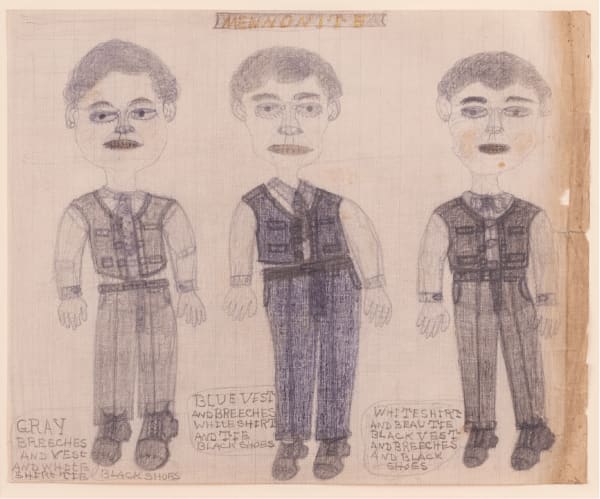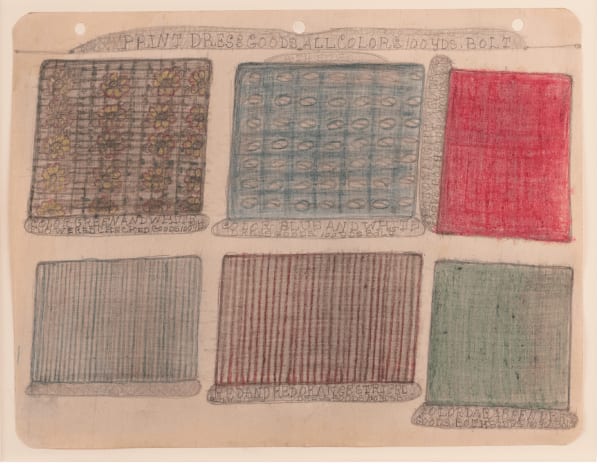Pearl Blauvelt American, 1893-1987
Pearl Blauvelt was a self-taught American artist of Dutch ancestry whose singular body of work—an exceptional collection of graphite and colored pencil drawings on ruled notebook paper—was discovered posthumously in a wooden box inside her long-abandoned home in northeastern Pennsylvania. Now recognized as a compelling figure in the field of outsider art, Blauvelt’s drawings depict quiet scenes of rural life: country paths, railways, horse-drawn carriages, household items, and intricately rendered clothing. Her imagery feels at once personal and universal—imaginative recollections shaped by a life lived quietly on the edges of society.
Working with only modest materials, Blauvelt showed a striking attention to proportion, texture, and form. While her style suggests a childlike sincerity, her drawings often reveal a subtle sophistication, exaggerating select details or highlighting the sculptural presence of everyday objects. Her compositions are both orderly and expressive, sometimes referencing the biblical, or drawing inspiration from mid-century mail-order catalogs.
Blauvelt’s ancestors settled in New York’s Hudson Valley in the 17th century, helping to establish the First Dutch Reformed Church. In the early 20th century, she moved with her father to a small coal-heated home in rural Pennsylvania, where she lived much of her life in seclusion. In the 1970s, she relocated to a care facility near Scranton, where she continued to draw until her death in 1987.




